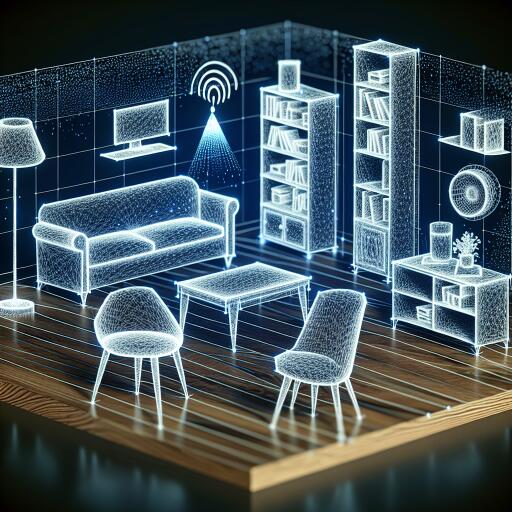Revolutionizing Indoor Object Classification: The Rise of mmWave Radar Datasets
Understanding the environment around us through technology has always been a fascinating endeavor, be it for navigation, automation, or enhancing various applications in our daily lives. A groundbreaking stride in this direction is the introduction of an innovative indoor object classification dataset utilizing sparse point clouds from mmWave radar, known as RadIOCD. This dataset marks a significant advancement in indoor object detection and classification, promising to revolutionize the way machines perceive their surroundings.
At the heart of RadIOCD lies a comprehensive Exploratory Data Analysis (EDA) that showcases the statistical properties of the collected data. The analysis emphasizes the relationship between the objects’ surface and the data points they generate, the objects’ height relative to the subject, and the subjects’ movement speed. This intricate examination reveals that larger surface objects generate more data points, though surfaces like desks, despite their size, create fewer points due to smaller reflection surfaces. Interestingly, the analysis found that the speed of the subject carrying the device plays a critical role in the dataset’s reproducibility, hinting at the importance of selecting an appropriate time window for data collection.
Further advancing the utility of RadIOCD, an array of time-domain features were extracted from the data, leveraging the three-dimensional coordinates to calculate mean, maximum, minimum, and standard deviation values across each axis. This extracted information, derived using a specifically designed code, enables a detailed split and processing of the dataset for machine learning applications, significantly easing future research and development processes.
To validate the effectiveness of RadIOCD in real-world applications, five different classifiers were rigorously trained and examined, ranging from Logistic Regression to a meticulously tuned Deep Dense Neural Network. The dataset was evaluated using both a user-dependent and a user-independent cross-validation approach, showcasing the Deep Dense Neural Network’s superior ability to classify objects accurately. Nevertheless, challenges like distinguishing between humans and walls or backpacks and chairs underline the complexity of indoor object classification.
RadIOCD is not alone in its quest to enhance indoor object classification through mmWave radar technology. Other datasets like milliCap and MilliNoise, alongside automotive-focused collections such as RadarScenes and NLOS-Radar, contribute to the growing body of research in this area. These collections, each with their unique focus, from noise identification to outdoor object classification, illustrate the versatile applications of mmWave radar technology.
Moreover, the advent of mmWave radar datasets has propelled advancements in human activity and gesture recognition – fields pivotal for interactive technologies and smart environments. Datasets like MMActivity, RadHar, and Pantomime have set benchmarks in these domains, showcasing the efficacy of mmWave radar in capturing human movements and gestures with high precision.
People tracking and identification represent another promising application of mmWave radar technology. The mmGait dataset, for instance, offers a rich resource for understanding human gait across different environments, enabling innovations in security, healthcare, and human-machine interaction. Meanwhile, the exploration of Ultra-wideband (UWB) sensors in datasets like UWB-gestures and OPERAnet opens new frontiers in gesture recognition and human tracking, further broadening the spectrum of possibilities in indoor positioning and activity recognition.
As we stand on the precipice of a new era in technology, the introduction of RadIOCD and its counterparts represents a substantial leap forward in our understanding and interaction with the environment. These mmWave radar datasets not only pave the way for groundbreaking applications in indoor navigation, smart home automation, and beyond but also offer a glimpse into the future of human-computer interaction, where our surroundings are not just passive spaces but active participants in our digital lives.










